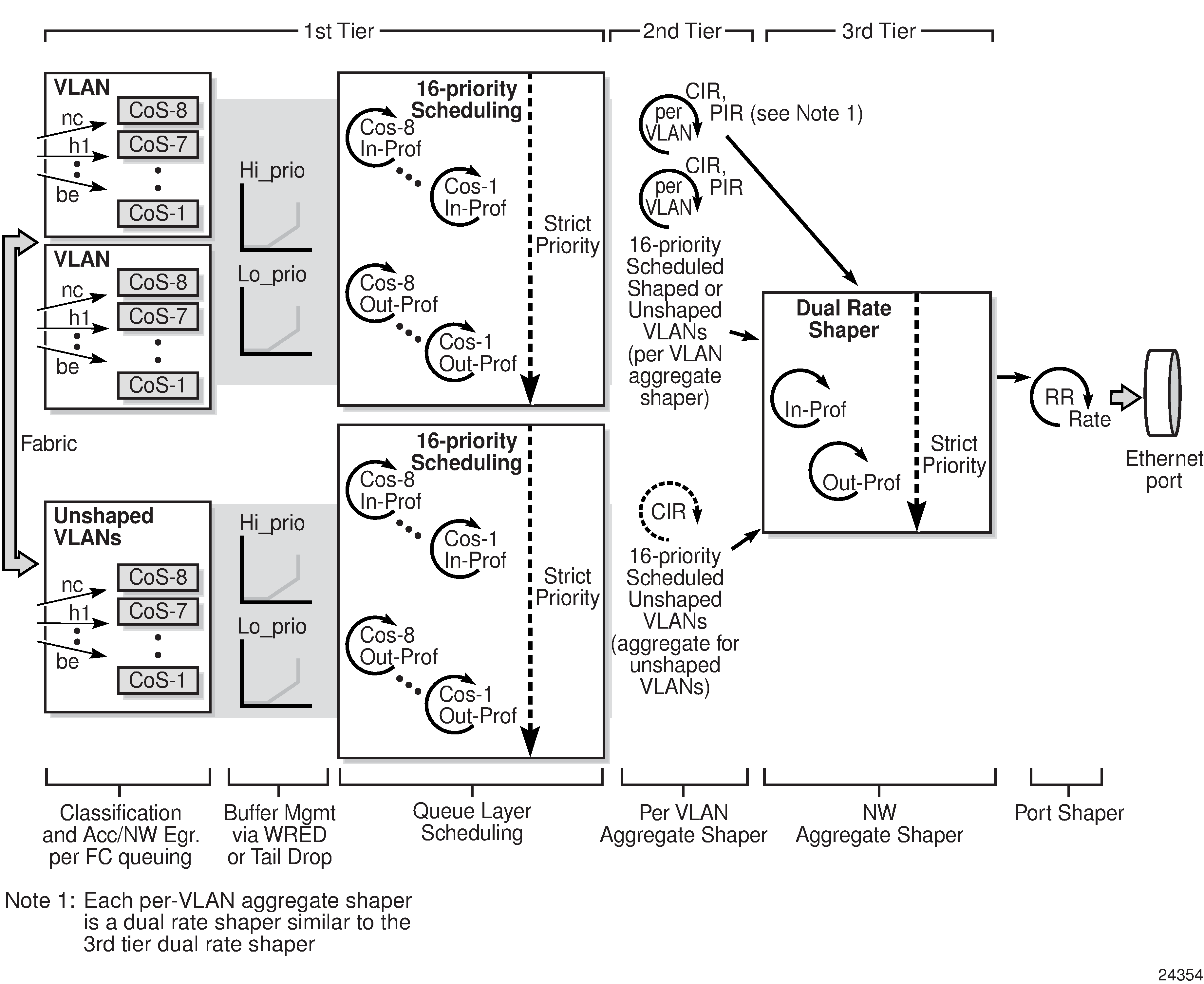Network egress VLAN traffic uses second-tier (or second-level), per-VLAN shapers to prepare network egress traffic for arbitration with the aggregate of the unshaped VLAN shaper. All the shaped VLAN shapers are arbitrated with one unshaped VLAN shaper.
As shown in Figure: Network Egress Shaped and Unshaped VLAN Queuing and Scheduling, traffic from the fabric flows to one or more VLANs, where it is classified and mapped to up to eight different CoS queues on a per-VLAN basis. The VLANs can be shaped or unshaped. Each shaped VLAN has its own set of CoS queues. The aggregate of unshaped VLANs uses the same set of CoS queues (that is, one set of queues for all unshaped VLANs).
For more information, see Per-VLAN Network Egress Shapers and Shaped and Unshaped VLANs.
Due to space limitations in Figure: Network Egress Shaped and Unshaped VLAN Queuing and Scheduling, the second-tier, per-VLAN aggregate shapers are represented as a single loop containing the label ‟per VLAN”, even though they are dual-rate shapers similar to the third-tier network aggregate shaper.

Because the per-VLAN shapers are dual-rate shapers, their aggregate rate CIR and PIR values shape the traffic, as follows.
The conforming, in-profile loop (aggregate CIR loop) schedules the packets out of the eight CoS queues in strict priority manner (queue priority CIRs followed by queue priority PIRs).
If the aggregate CIR is crossed at any time during the scheduling operation, regardless of the per-queue CIR/PIR configuration, then the aggregate conforming loop for the VLAN ends and the aggregate non-conforming loop (out-of-profile) begins.
The aggregate non-conforming loop schedules the packets out of the eight CoS queues in strict priority manner.
A shaped VLAN configured with default aggregate rate limits (PIR = maximum and CIR = 0 kb/s) is equivalent to an unshaped VLAN except that its traffic flows through a per-VLAN shaper rather than getting combined with the bulk (aggregate) of the unshaped VLANs. Using a shaped VLAN in this way (default rate limits) might be preferred over using an unshaped VLAN for the following reasons:
coherent scheduler behavior across VLANs (that is, the use of only one scheduler model)
ease of configuration
higher throughput, as each shaped VLAN gets to transmit one packet at each pass of the out-of-profile scheduler as opposed to one packet from the aggregate of unshaped VLAN queues
The arbitration of shaped and unshaped VLAN traffic at the third-tier shaper is described in the following section.